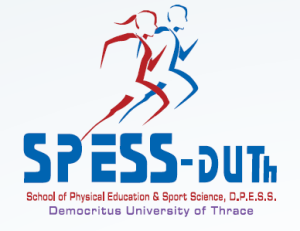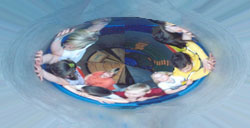Zaragas H., Kampitsis Hr., Giagazoglou V., Vlahopoulos S
Aristotelian University Thessalonica - D.P.E.S.S. Serres
Abstract
Aim of the present research was the detection of motor disturbances, the detection of the vividness degree of the mental representation as well as the study of the relationship between the different levels of motor coordination and the vividness degree of the mental representation among 412 children of preschool age from 4 to 6 years old, who were selected by accidental sampling from Epirus and Corfu regions. The motor test “Motor Assessment Battery for children (M-ABC, Henderson &Sugden,1992).The evaluation of vividness degree of the formation of mental pictures has been made according to “The measurement of imagery ability) (Hall, Pongrac and Buckolz,1985). There were used tables of frequency distribution and their relative percentages regarding the rates of the two variables as well as the factors of correlation Pearson and Spearman.Comparing the results we conclude that a 4.9 percentage of the sample has serious difficulties in motor . It has been observed a statistically negative connection (Spearman r = -,461 & Pearson r = -,710 df = 410,p<0.001)between vividness degree of the mental representation and the different levels of motor coordination. The children who have demonstrated good rates of motor coordination without difficulties have also shown a high vividness degree of mental representation while the difficulties on children’s motor coordination are related to the low rates of the vividness degree of mental representation. The importance of the present survey is double-based. Through the appointment of this relationship between the two variables of the motor coordination (body-motor level) and the vividness grade of mental representation (perceptivecognitive) level, useful conclusions are being extracted not only on pedagogic science but on sports, too. The motor behavior and the motor learning are promoted through such processes of motor coordination growth and the processes of perceptive-cognitive development shaping in that way an all-out child’s personality which is the aim of General Education. Additionally, ways of early detection of children with motor and perceptive-cognitive particularities are being demonstrated.
Keywords:
mental imagery, kindergarten, motor clumsiness, M-ABC test.
Download (pdf, 150kb)






